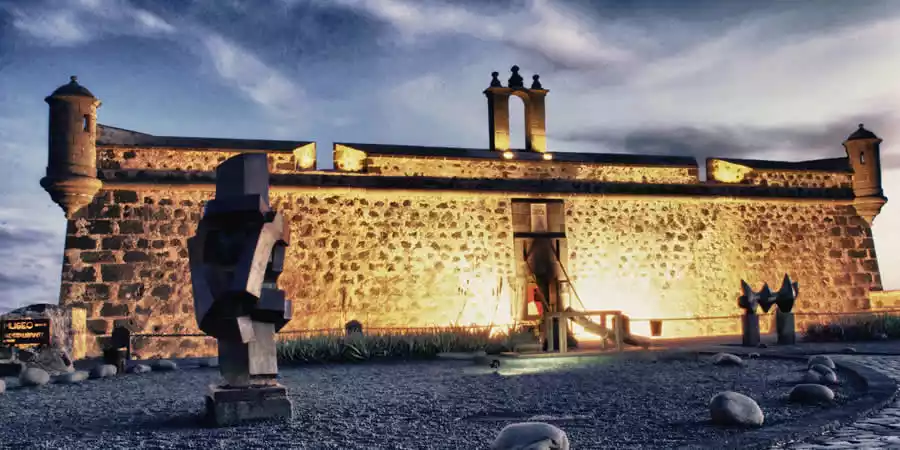
The International Museum of Contemporary Art (MIAC) is located at the entrance to the port Arrecife fishery, more specifically inside the Castillo de San José.
This fortress was built in the 18th century during the reign of the Bourbon monarchy of Carlos III. At that time there were three military buildings in Lanzarote: the Castillo de Santa Bárbara in Teguise, the Castillo de San Gabriel in Arrecife and the Torre del Águila in the south of the island. The Castle of San José; It was built to protect the entrance to the strategic Puerto de Naos, although it also served to provide employment and mitigate the hardship of the time. For this reason it is also known by the nickname of Fortress of Hunger.
But it was in the mid-1970s when César Manrique came up with the idea of restoring it to house pieces of contemporary art, in order to promote, gather and exhibit the works most significant of modern artistic creation giving rise to the International Museum of Contemporary Art.
The fortress, with a semicircular floor plan, maintains its original structure and appearance. César Manrique only devised a few interior changes such as the connection, by way of stairs, between the two larger rooms and the restaurant-bar, a viewpoint in reality, newly created although perfectly integrated into the complex.
Outstanding in the intervention is the esplanade located in front of the façade of the fortress and its surroundings, masterfully integrated.
The MIAC collections are the reflection of an artistic generation that places its production between the 50s and 70s, with some specific work that exceeds this chronological margin.
Among other authors represented, works by T�pies, Momp�, Millares, Gordillo, Alechinsky, Le Parc, �scar Dom�nguez and C�sar Manrique himself, creator of the Museum, are permanently exhibited. .
Among the three great currents of abstraction that meet at the Museum, the geometric, the formal and the figurative stand out.
RATE
SCHEDULE
SUMMER SCHEDULE (July 1 - September 30)